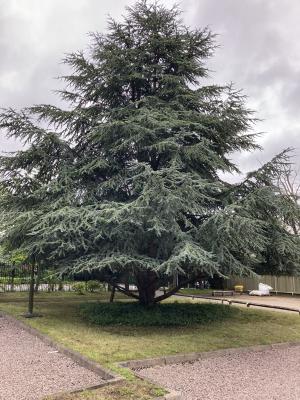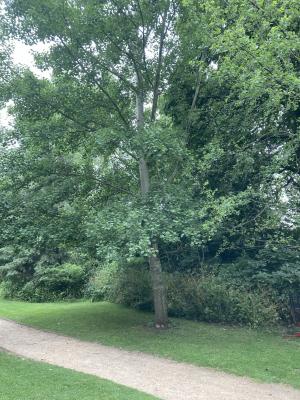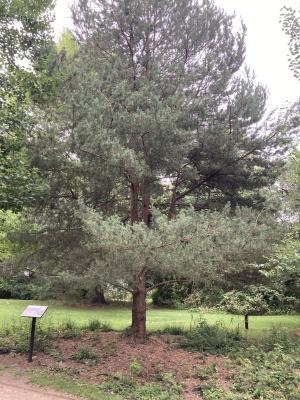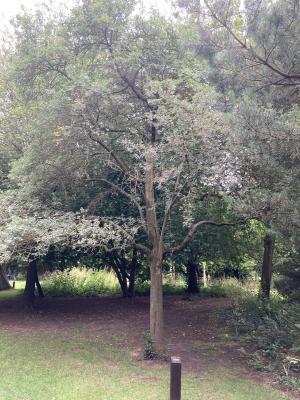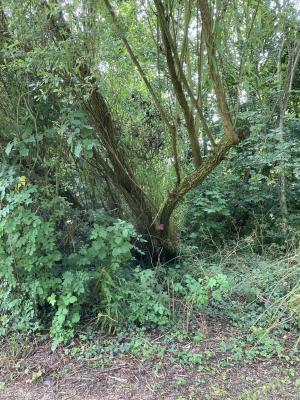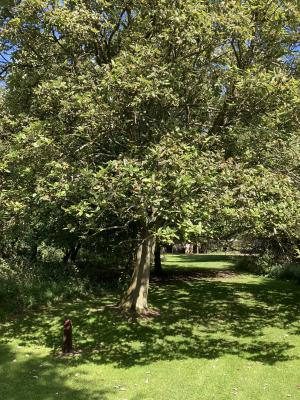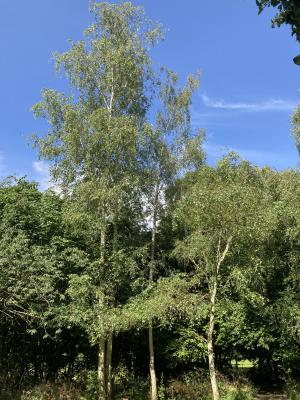Our Tree Collection
This native of the Atlas mountains of Algeria and Morocco was introduced to Britain in 1841. One widely planted variety has blue-green needles, from which it gets its nickname of 'blue cedar'.
Its main difference from other cedars lies in the formation of its branches, which are upward-sweeping. An easy way to remember this is by the alliteration 'Atlas:ascending', as opposed to 'Deodar:descending', and 'Lebanon:level'.
In this country it prefers to grow on sandy soils, loam and limestone, and will tolerate hotter and dryer conditions than most other conifers. The bark is dark grey, with narrow fissures. Unlike most other conifers, it flowers in the autumn, producing long, cylindrical erect male catkins.
The small leaves of aspen are borne singly on long flattened stalks and flutter in the slightest breeze making a distinctive rustling sound. The leaves are smooth on both sides, the underside being a paler colour. In autumn they turn an amber-yellow.
In the wild, aspens can quickly colonise new ground and rarely grow singly. They send up suckers from their roots which often form dense thickets. The silvery-green bark becomes furrowed as the tree ages. Aspen leaves have wide teeth and the bark is diamond patterned.
Growing singly or in small clumps on hills and high moorland, this fine conifer can provide a dramatic touch in an otherwise featureless landscape. As the tree matures it loses it's lower branches and forms a flat, spreading crown.
It's bark is warm-red on the upper part of the trees and deeply fissured lower down. The needles are shorter than those of other pines. The needles are a blue-green colour and usually come in twisted pairs. The female flowers are crimson in colour and are located at the end of a shoot. The tree can reach 120ft in height.
Crataegus orientalis, known as oriental hawthorn, is a species of hawthorn native to the Mediterranean region, Turkey, Caucasia, Crimea, and western Iran, with fruits that are orange or various shades of red.
Few trees can match the bird cherry's display of flowers in late May, when it's white blossoms hang in long bunches and spread a strong almond-like scent. The fruit, which ripens in July and August, is bitter and edible only for birds. The bark peels and has scattered pores; it's smell is unpleasant, but in the Middle Ages it was the source of a medecine for upset stomachs.
Bird cherry is often planted as an ornamental tree. It tends to flourish farther north than wild cherry. The fruit is black with a hard, oval stone. The leaves are alternate and fine-toothed, and the flowers are borne in semi-erect or hanging spikes.
Aria edulis is considered the same species as Sorbus aria. Commonly known as Whitebeam or Common Whitebeam. It is a deciduous tree species from the Rosaceae family, originating from Europe.
Growing to medium size, this plant produces oval leaves with felted white undersides and serrated edges, they display attractive autumn colouration. Flowers are borne in clusters, coloured white, appearing from spring and leading onto red berry fruits from summer-autumn.
Not often seen growing wild, this tree is a popular choice for parks and gardens, the fruits are popular with birds. The bark is smooth and grey in colour, with grey-green stems which appear more reddish in the sun.
The slim trunk with silvery-white bark, that often peels, makes this tree one of the most decorative and easily recognised of Britain's native trees. It is a pioneering tree, that is, one of the first trees to establish itself on newly cleared land or burned heaths. Along with the Rowan, it grow's higher up the sides of mountains than any other tree.
The long, whip-like twigs are shiny and red-brown, and the branches are usually drooping, hence the latin name pendula; 'hanging'. On mature trees the bark is covered with black, diamond-shaped patches. It is not a long-lived tree.
